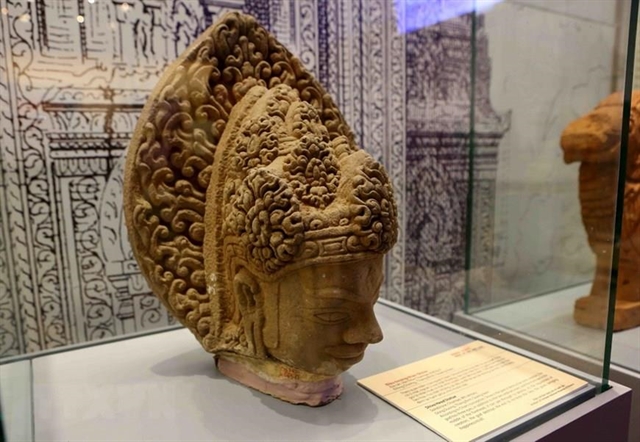 Life & Style
Life & Style


|
| A statue of the head of Shiva belonging excavated by Vietnamese archaeologists this year. — VNA/VNS Photo Thành Đạt |
HÀ NỘI — Vietnamese archaeologists gathered at a conference in Hà Nội on Thursday and Friday to discuss the greatest discoveries of the year.
The conference was hosted by the Institute of Archaeology – Vietnam Academy of Social Sciences.
Addressing the event, Doctor Đặng Xuân Thành said: “This conference provides us with a chance to exchange, debate and evaluate our cultural heritage. The Vietnam Academy of Social Sciences appreciates the efforts of the Institute of Archaeology and other organisations for holding our 54th annual conference,” he said.
Doctor Bùi Văn Liên from the Institute of Archaeology revealed that the conference had received 360 reports this year as a result of the hard work carried out by the sector.
They included new discoveries and studies on the Stone Age, the highlights of which were the excavation of C6-1 volcanic cave in the central province of Đắk Nông and studies on anthropological components, pollen spores, graves and animal remains. The excavation results confirmed C6-1 was a residential area containing a workshop to create tools as well as graves.
Other notable excavations were carried out at Luy Lâu Citadel in the northern province of Bắc Ninh, which revealed the region used to be a residential area during the Chinese invasion of Việt Nam.
Another major excavation was conducted at Đồng Miễu Chăm Tower in the central province of Phú Yên. Based on the study, scientists determined the tower was first built in the fourth century and then rebuilt in the fifth century, which makes it the earliest remnant of a Chăm Pa tower ever found.
Members of the Vietnam Maritime Archaeology Project carried out a study on Quan Lạn Island in the northern province of Quảng Ninh, in addition to the second excavation of Đồng Chổi to clarify its value before Vân Đồn becomes an international harbour.
The results found it had been used as a burial ground in the New Stone Age.
The highlight of the year was part of a five-year collaboration between Việt Nam and Russia at archaeological sites in An Khê in the central highlands province of Gia Lai. Some of the objects unearthed there indicate An Khê was one of the most ancient birthplaces of human beings.
According to Doctor Nguyễn Gia Đối, acting director of the Institute of Archaeology, these studies had positive social effects and aimed to reveal history, preserving and promoting the cultural identity of the nation. — VNS